1lumen selects and reviews products personally. We may earn affiliate commissions through our links, which help support our testing.
Manker E14 IV review
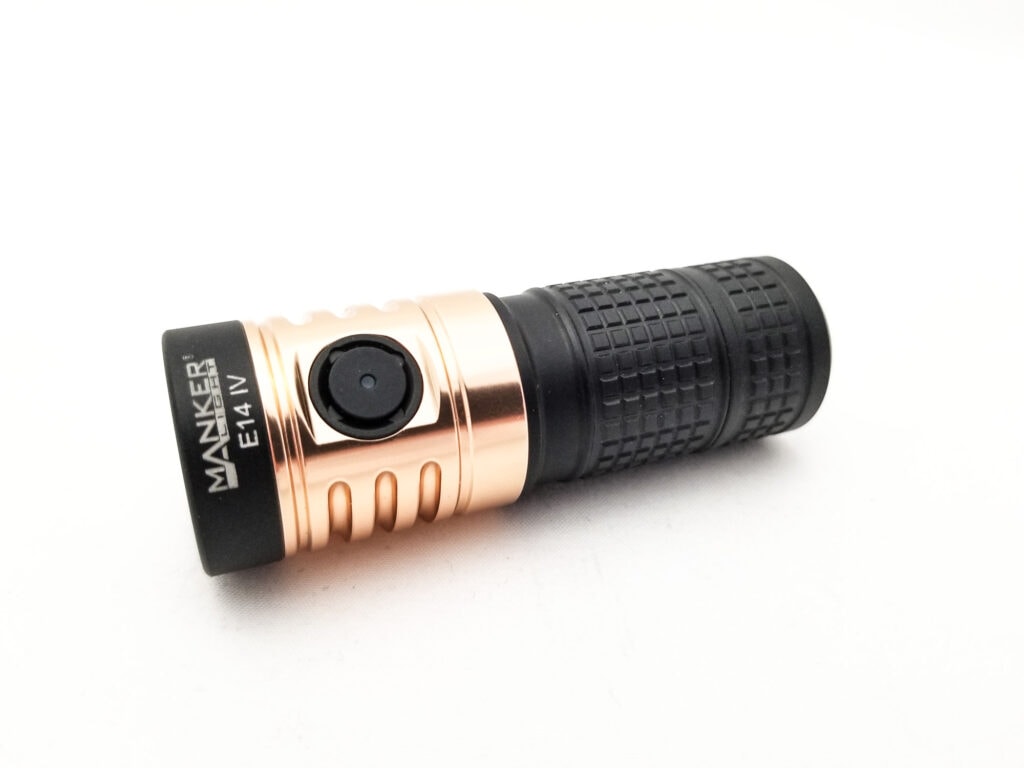
Manker E14 IV specs
| Brand & Model | Manker E14 IV |
|---|---|
| Flashlight category | Everyday Carry |
| LED | Samsung LH351D 4000K |
| Max. output | 2800 Lumens |
| Max. beam distance | 126 meters |
| Max. beam intensity | 3969 cd |
| Battery config. | 1×18350 or 1×18650 |
| Onboard charging | N/A |
| Modes | 7 |
| Blinkies | Strobe, Beacon, SOS |
| Waterproof | IP67 |
| Review publication date | July 2023 |
Review intro:
Manker lights have become a common sight on my desk these days. I’ve reviewed two versions of the MC13 II, and although very different LED-wise, both were very good options for a pocket light with awesome build quality, great performance for small lights, and very well thought out UIs. Manker has a habit of continually improving their product lineup, and the one I’ll be looking at today is a good example. The E14 series has undergone 4 revisions since its release in 2016, but the general format is the same: It’s an 18350 size, quad emitter EDC flashlight with a neato bare copper head and aluminum body. The first version was 1600 Lumens, with subsequent versions bumping the output. The last version, IV released in early 2023, sees further improvements, with some carried forward (which is fine with me). 1Lumen has reviewed the version III, so let’s see how this E14 stacks up.
Package quality.
Manker packages their lights nicely. Some come n neat tins with graphics, some in regular boxes. THis light came in a very Thrunite-esque box with a lift-off lid, colorful Manker orange and black graphics, configuration label, and some specs. Here’s what you get:
- Manker E14 IV flashlight
- Lanyard
- Manker branded button top 18350 battery with USB type C charging
- 2 spare o-rings
- USB type C cable
- Plastic diffuser
- Warranty card
- Manual
This is a pretty generous loadout in this segment and everything you need to get going, even if you’ve never owned a flashlight before. I liked the padded lanyard with the Manker logo as well. You also don’t need a battery charger as any 5 volt output wall wart will suffice. I really liked the edition of a diffuser since it adds a lot of utility since it can double as a lantern. The light also included a (optional) red diffuser for some night vision-preservation action.
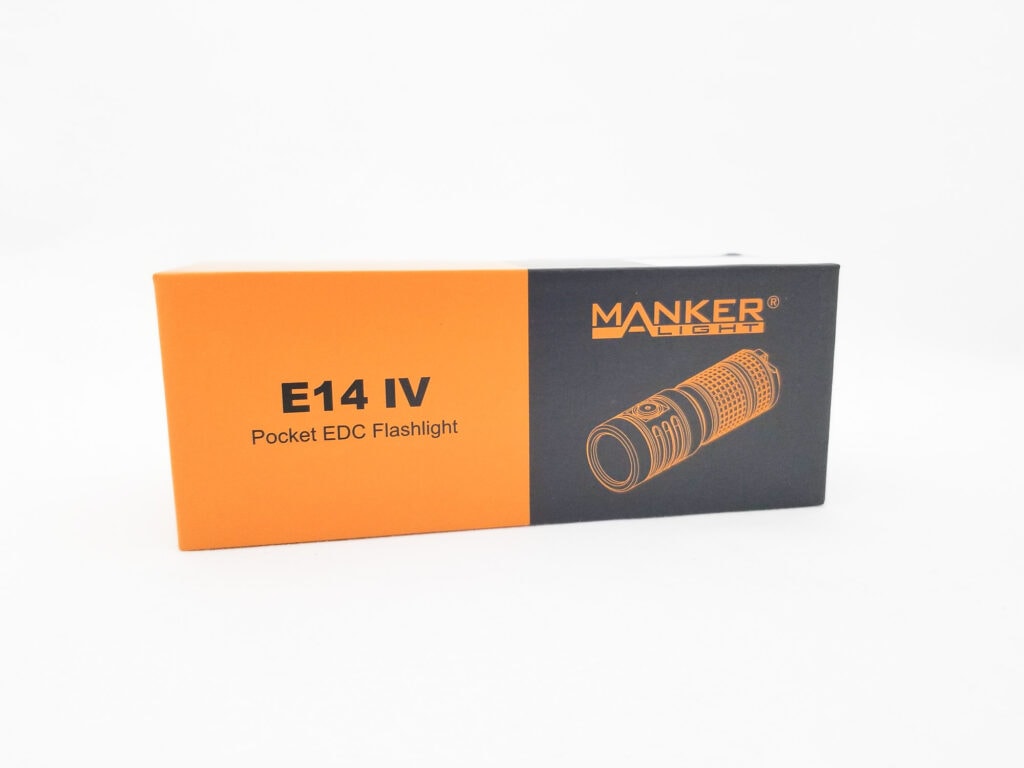
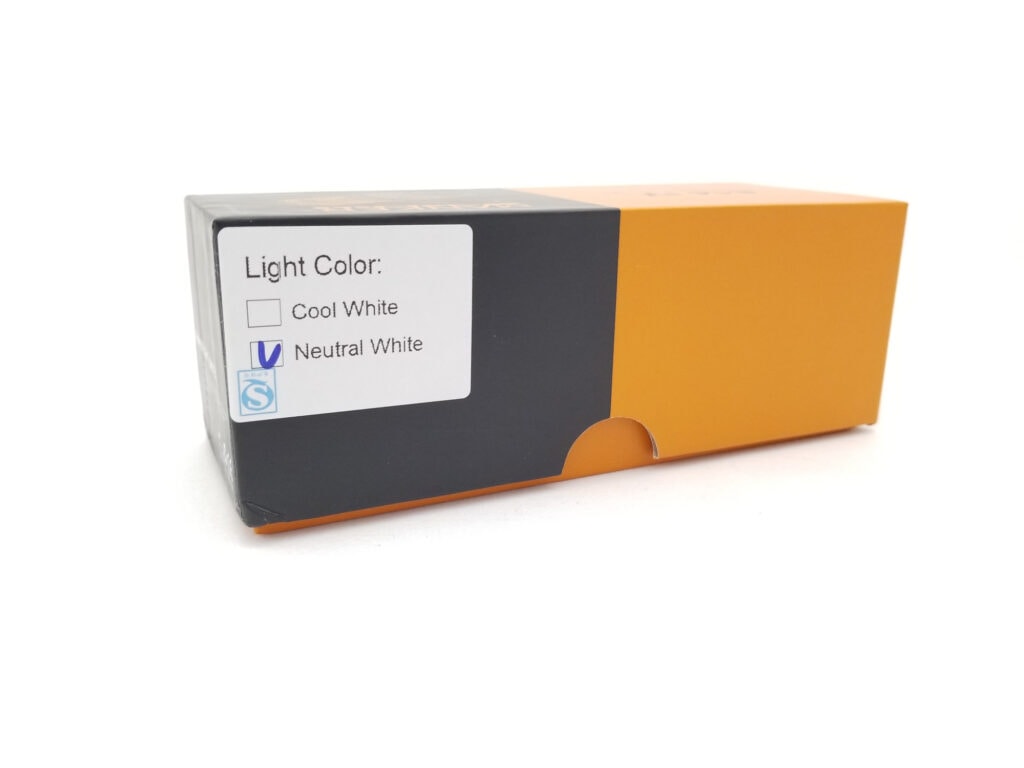
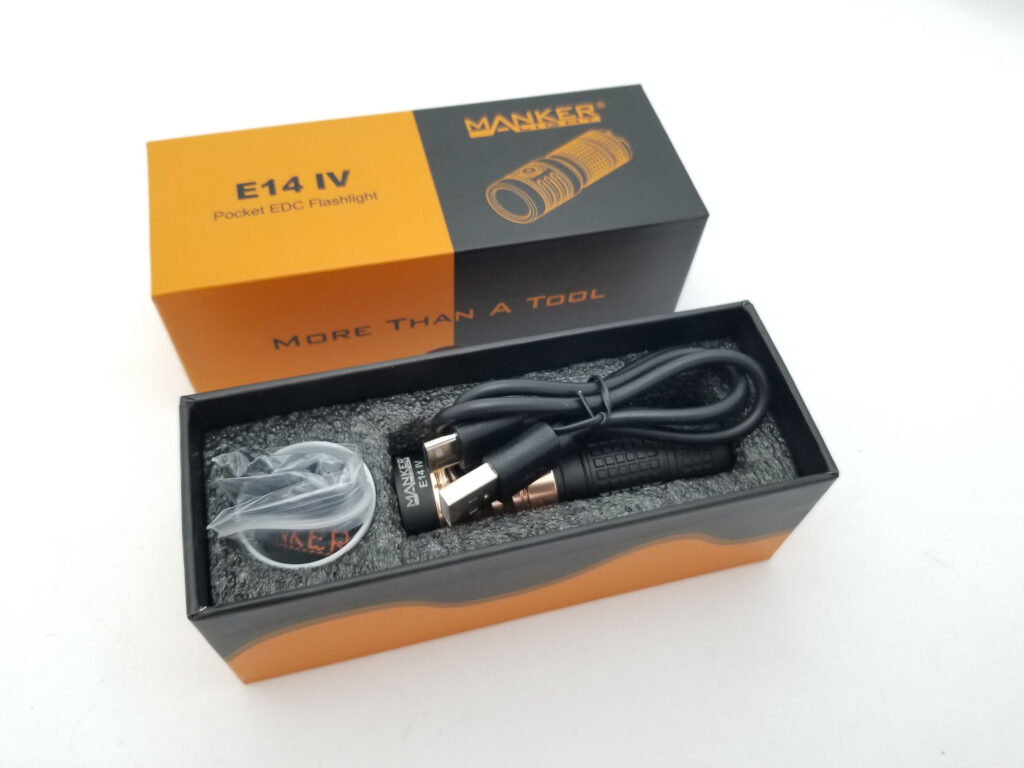
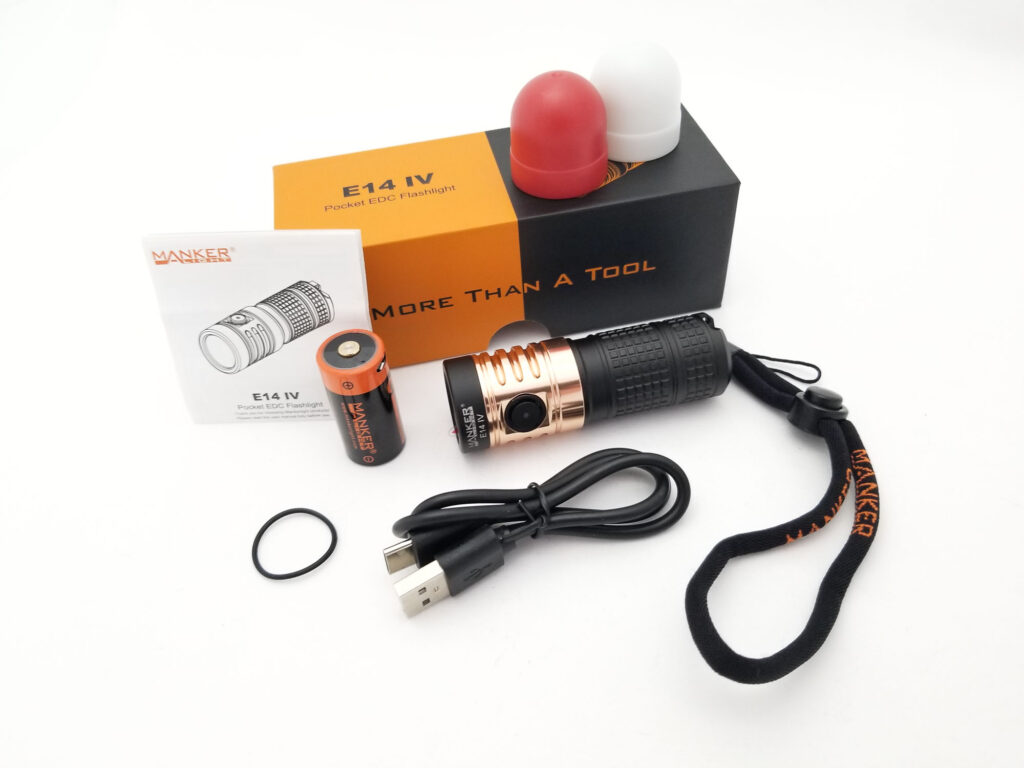
Flashlight in use
The E14 IV has always been an EDC pocket flashlight, so it’s going to be very portable and have some obligatory features for general purpose use. Take it on a walk or hike, use it around the home, or illuminate things far away. It’s small enough to easily pocket, even in 18650 mode. With the 18350, it’s pretty small and light. Before you use the light, make sure to remove the insulator in the battery tube. My sample was also in the lockout mode which requires 4 quick clicks from off to unlock.
I really enjoyed handling the light. It’s nicely balanced, very compact in 18350 mode, and the small size makes it really easy to maneuver, and extremely pocketable. Despite not having a pocket clip, pocket carry very easy, although it didn’t disappear in my pocket like the Lumintop FWAA. There’s gripping surfaces in all the right spots, with the battery tube and tailcap featuring frag grenade style polygonal blocks and a bricky finish that really helps with grip. I had no trouble gripping the light in all hand positions, and it points very intuitively even in 18350 mode. With the tube extended in 18650 mode, despite a roughly 2.5 inch section of no texturing and a reduced diameter where it telescopes in and out, the handling isn’t negatively affected.
There’s a single e-switch for switching duties, and the button is covered in a blacked-out metal-like cover and bezel. The switch has a central LED indicator for battery state, charge, and on state, and it lights up for the first 5 or 10 seconds after turn on, but doesn’t stay lit and is not lit on standby. It’s set in a raised portion of the head, and is easy to find by feel. The switch action is nice and predictable, with positive clicks and a nice feel.
There is a magnet in the tailcap, and although I’m not a huge fan of these on pocket lights, I think it’s nonetheless a welcome feature here. It’s decently strong, and helped the E14 to cling to ferrous surfaces quite well. I got it to stably hold itself horizontally on a thin area (a pocket clip from another light). Tail standing is no problem either, and Manker includes a white plastic diffuser that turns it into a pretty handy-dandy lantern. A red diffuser is optional, and my sample light came with it. The red light isn’t as ‘red’ as a pure red LED, but very good.
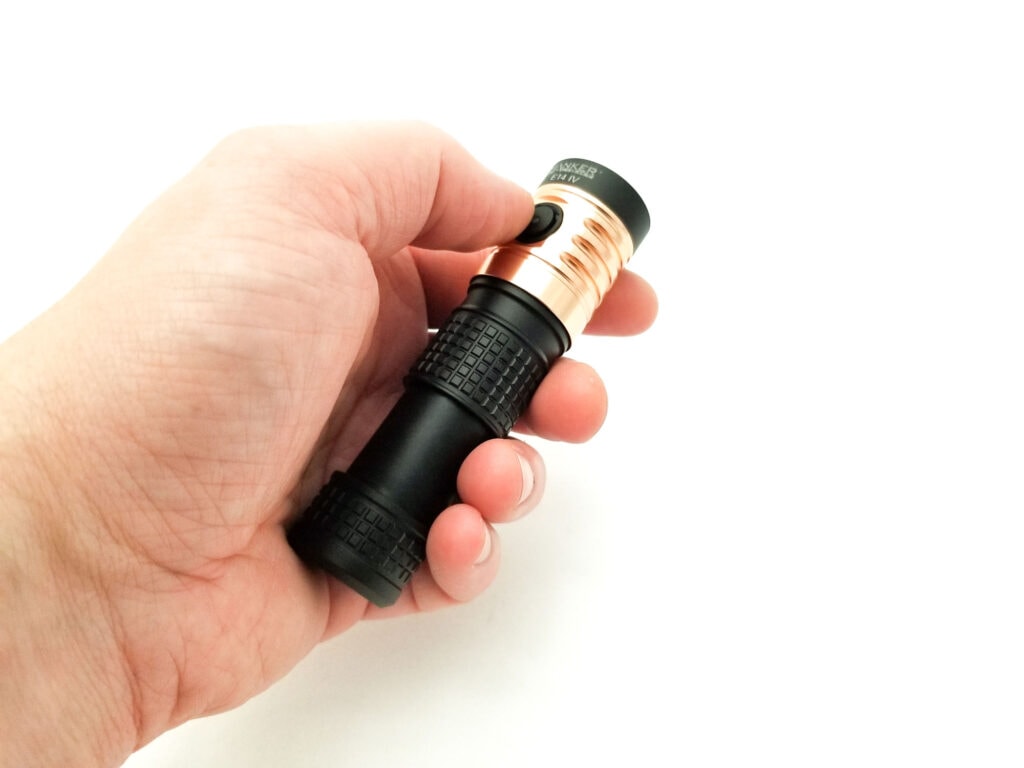
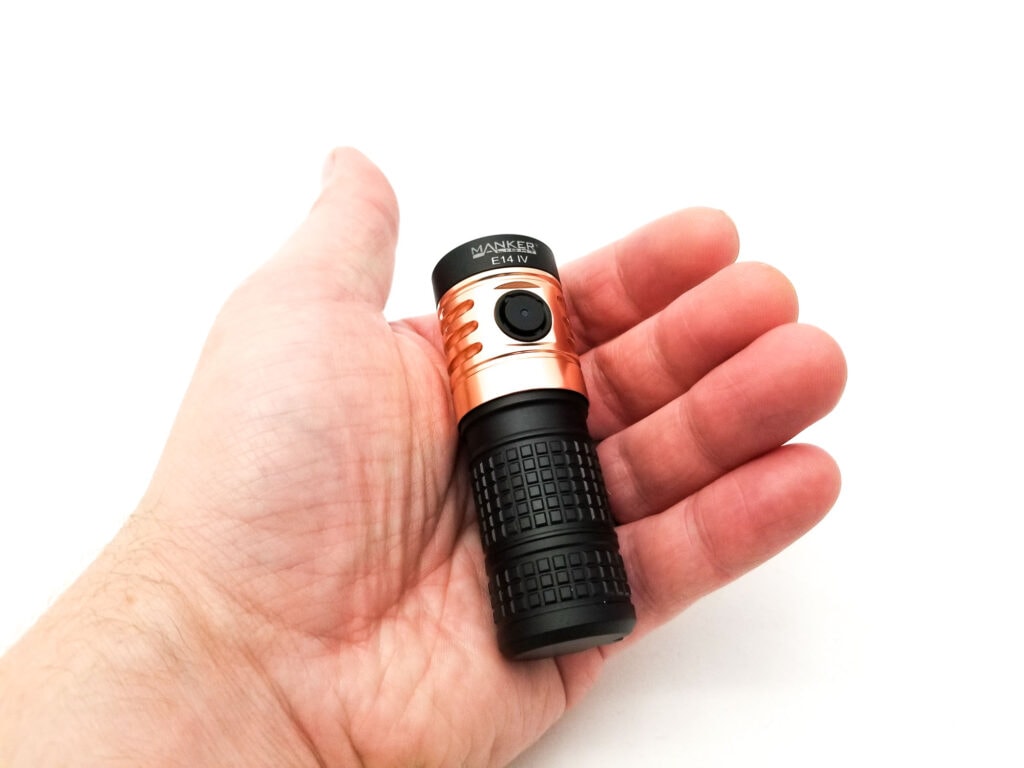
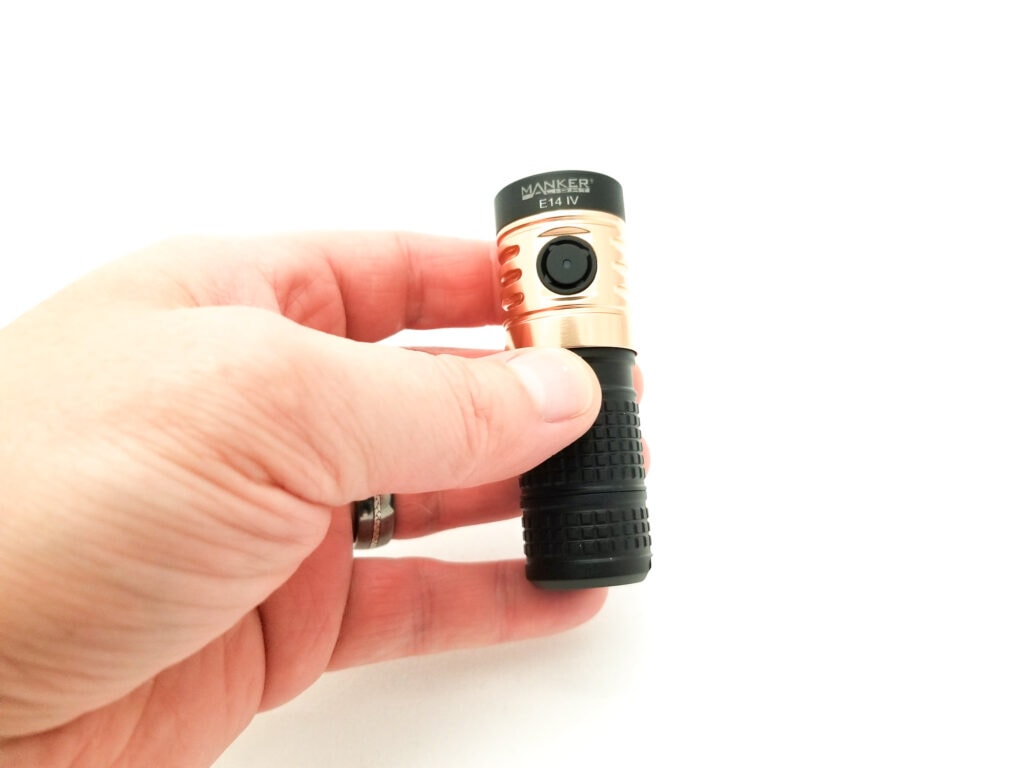
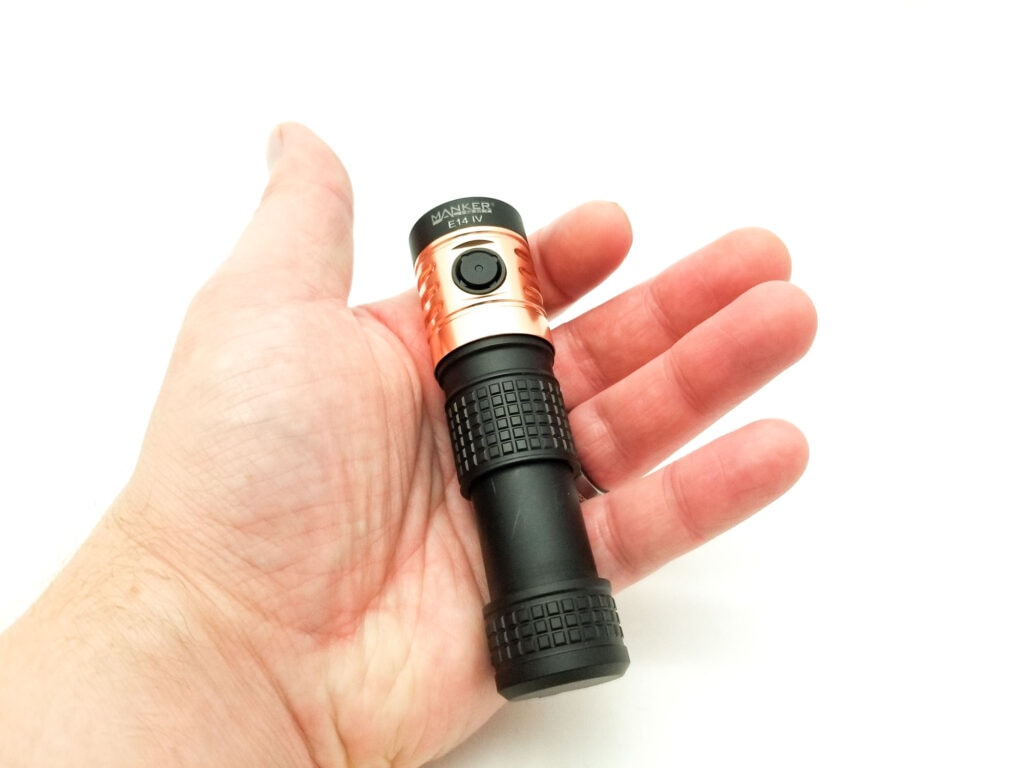
Build Quality and Warranty
This isn’t my first go with a Mankerlight product, and I found it to be a very nicely crafted and well-made flashlight. They fall somewhere in between Thrunite and Lumintop price-wise, and the sample light comes in around $65 US (minus any discounts). In my opinion, this is a competitive price for a nice EDC.
The build quality is very, very nice. It passes the maracas test fine, there’s no anomalous gaps or misaligned parts, everything lines up nicely, and the machining is free of defects or tool marks. The bare copper head has been treated with a clear coat to keep it from tarnishing. I really like the addition of a copper head since it has better thermal properties than aluminum and it looks beautiful and makes it unique, a bit like what Astrolux did with S43S. The body from the head down is milled from aircraft aluminum, so probably 6061-T6. The finish is advertised as type III HA, and it’s nicely done, with no defects, thin spots, or off-colors. The light only comes in black and the anodizing is marketed as type III HA. It’s decently bricky and nicely grippy, which I like. All the edges are knocked down and smoothed as well. If you fancy to do so, the bezel can be unscrewed by hand to remove the lens and reflector. I couldn’t see any thermal paste, but I’m sure there’s some under the MCPCB. The solder joints look fantastic, and there’s no flux residue.
I was surprised to see a spring for the driver positive contact. This is a nice feature usually seen on tactical-use and professional lights since it adds durability. Peering down the battery tube shows a press-fit, larger tail spring. The threads on the tube are fully anodized, but pretty fine (and very short!). They’re rectangular cut and pretty smooth, but could benefit from some lube. I use SuperLube synthetic grease for my lights, and I recommend that or silicone paste. The inner threads for the telescopic battery tube are bare and pretty smooth also, but not lubed either. There’s o-rings sealing every major joint including the lens, and Manker gives this E14 an IP67 rating. I can attest the light is sealed up nicely and with no external charge port.
For the warranty, Manker gives you a decent one with a 5 year term. Take it away Manker! Mankerlight provide high-end products and intimate 5 Years warranty service to dealers and end users. Mankerlight provides easy, reliable, speedy service to all lights under our warranty. Dealers will be responsible for customers. 1. Please contact the dealer for replacement if you experience any problem with Manker product within 15 days. 2. The dealer will offer free repairment service or replace the flashlight with the same or similar model if Mankerlight flashlight fails during normal use within a period of 5 years. 3. LEP flashlight, rechargeable battery, flashlight with built-in battery are warranted for a period of one year (12 months) from date of purchase.

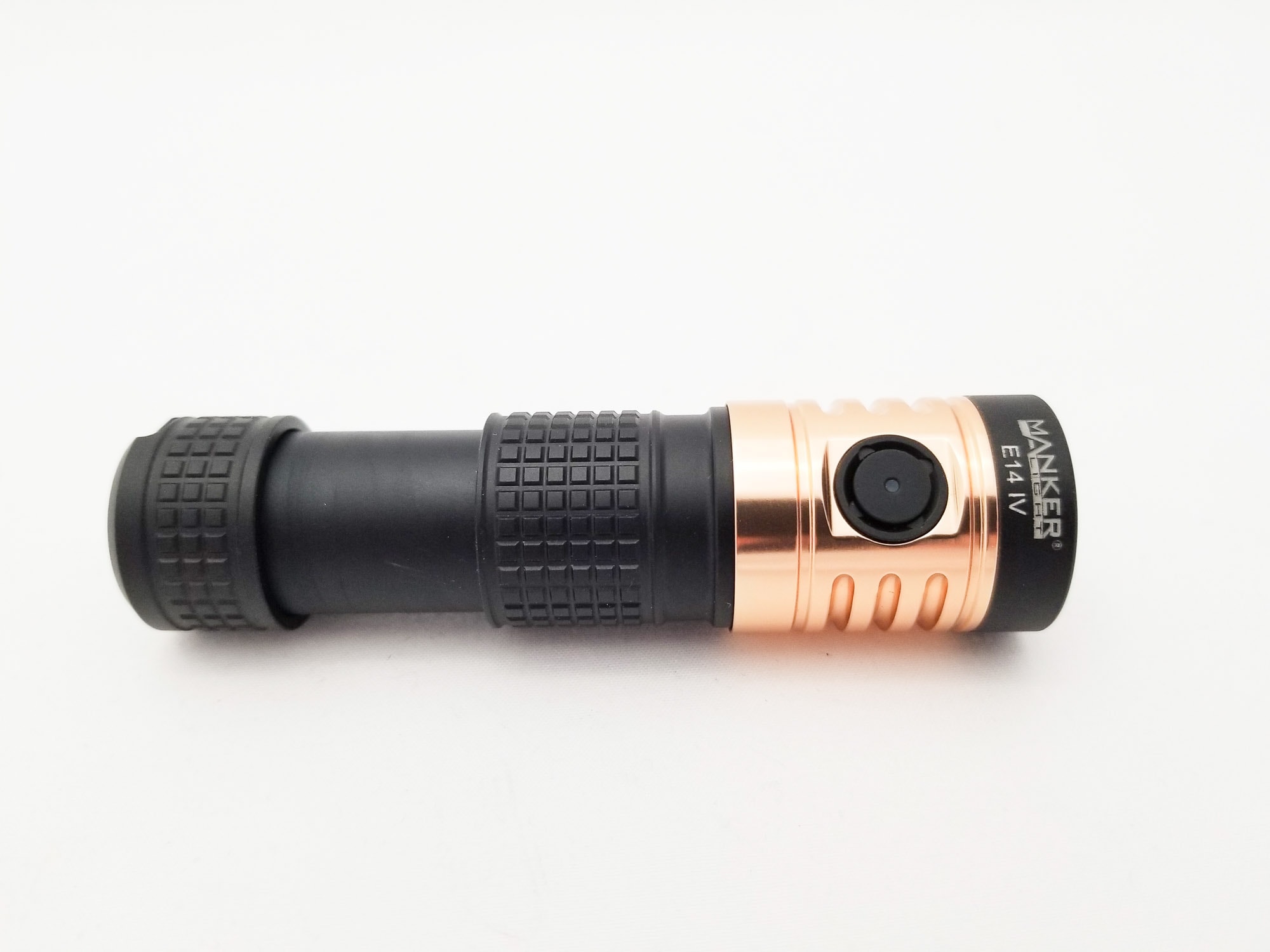
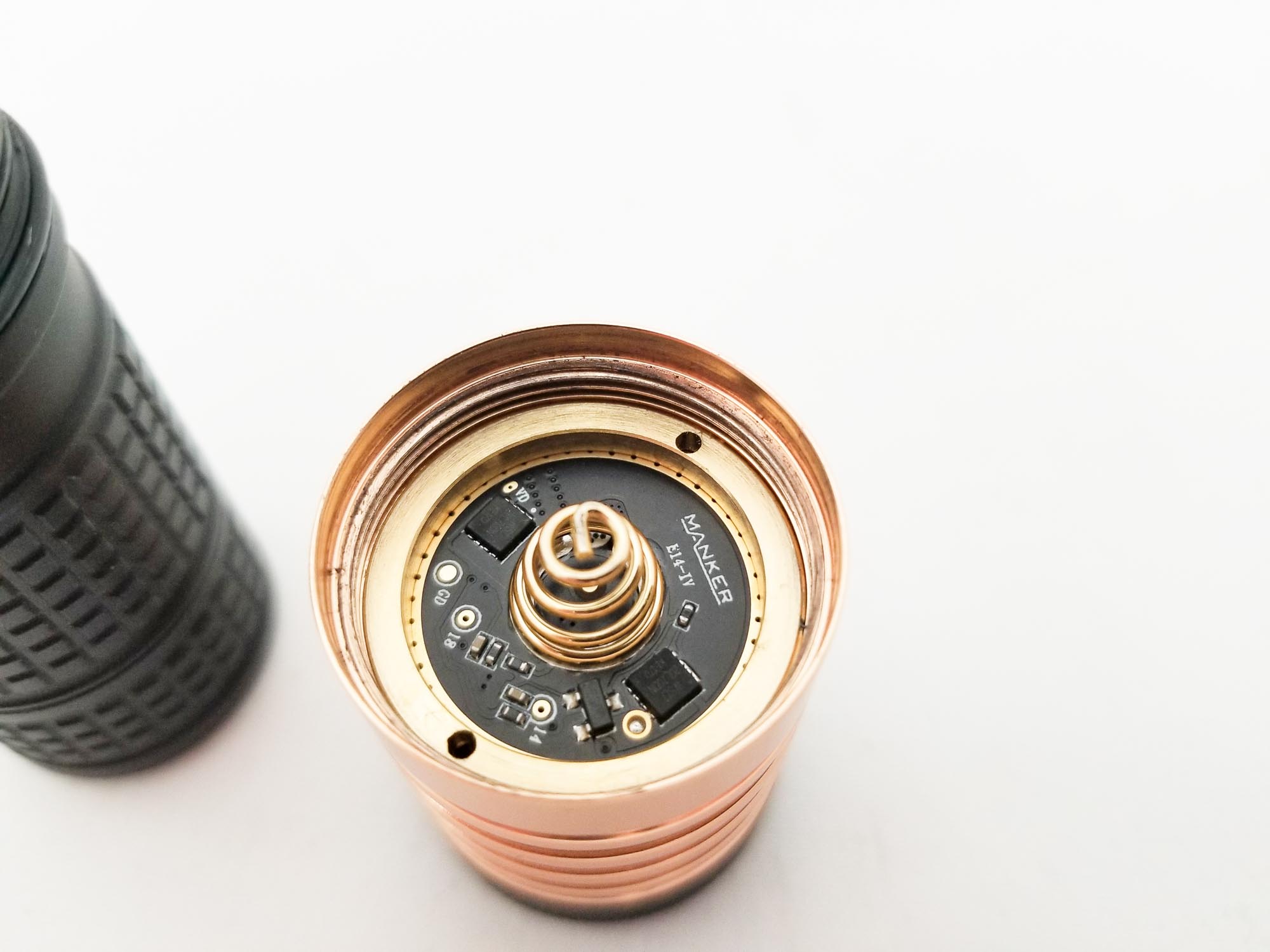


LED, Lens, Bezel, Beam, and Reflector
The E14 has employed a variety of LEDs over its lifespan. Starting with Cree XPG-2 and 3,Nichia 219B, and Cs for the first 3 versions, this iteration of the E14 Manker is using the tried-and-true Samsung LH351D LED. Now maybe Manker has their reasons, but I question Manker’s choice here since the Nichia 519A offers similar output and better tint and CRI. Well, we can’t have it all. Just about every reputable brand has used this LED at one time, as it was the highest output, high CRI LED until the 519A came along. It’s a 3535 size CSP type LED. You can push it pretty hard and get high output comparable to an XP-L, with the added benefit of high CRI (up to 90), low CRI, cool white, neutral, and warm CCTs. The high CRI versions do tend to get a bit (or a lot) green at low currents though, which has been my experience with Sofirns ‘dog fart’ 5000K bins, which came out baby puke green at low currents. The output is rated at 4000 for the cool white LEDs and 2800 for the neutral whites. The sample light came with the neutral white LH351D, spec’d at 4000K and 90 CRI. The Opple Lightmaster 3 agrees: At 2 meters from the sensor, on Turbo the CCT is 3883K with CRI Ra of 93. The duv is 0.0034, so it’a not as nice as a 4500K 519A, but not unexpected from the LH351D.
The bezel is aluminum and black like the tube, and the lens isn’t very well protected since the bezel doesn’t extend much over the AR coated high strength glass lens. The prior E14’s used quad TIRs, but this version is using a shallow quad OP reflector. The beam is pretty much all flood and not much else. Manker claims almost 130 meters throw from this, so not too bad for a small light.
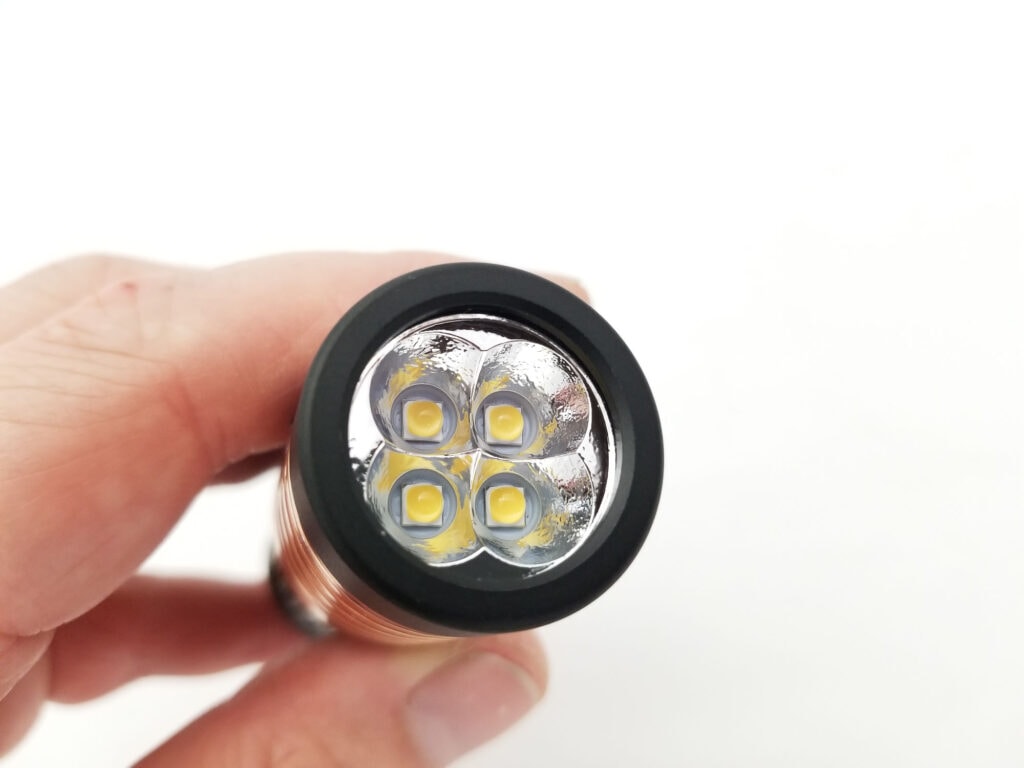
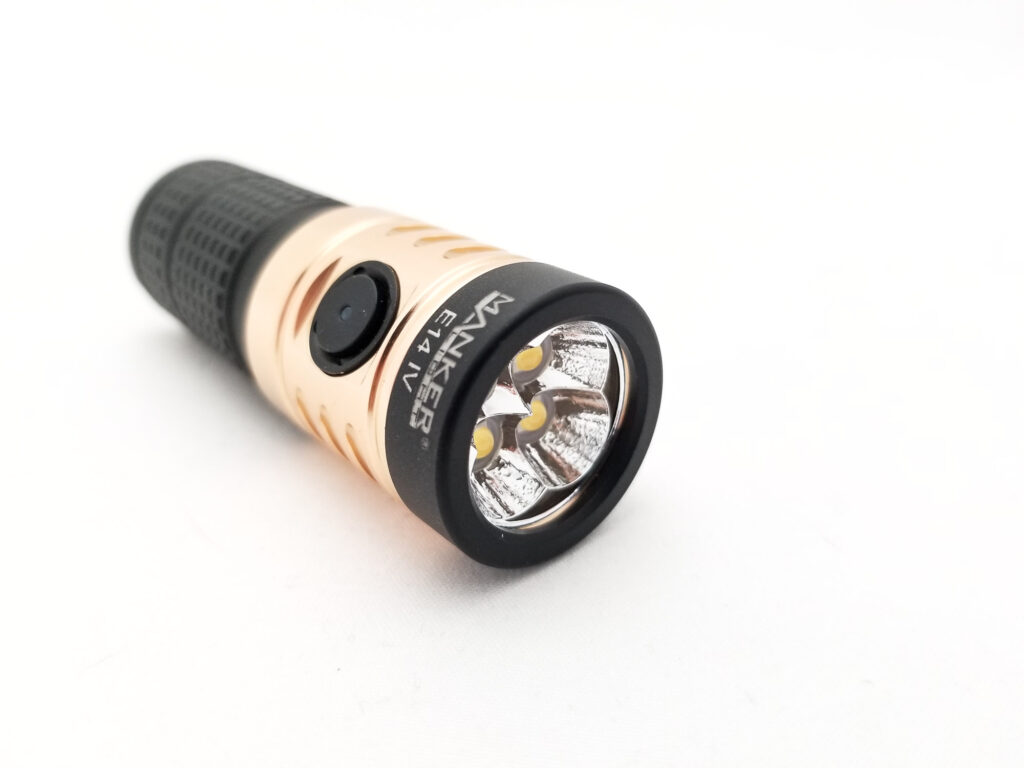
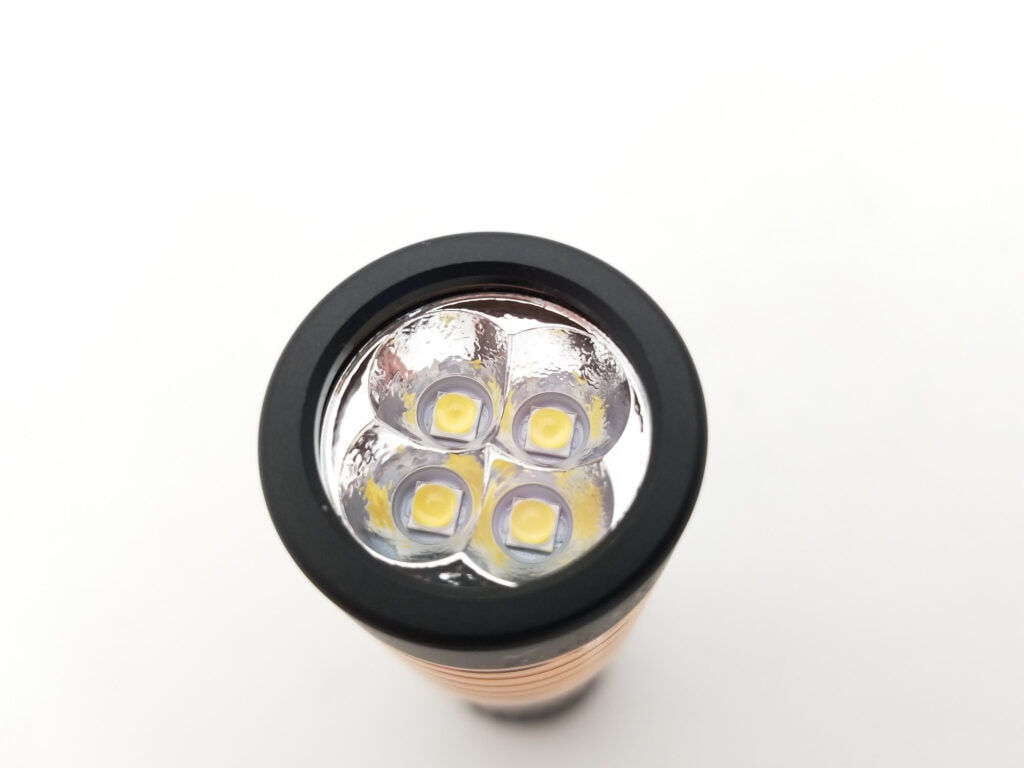

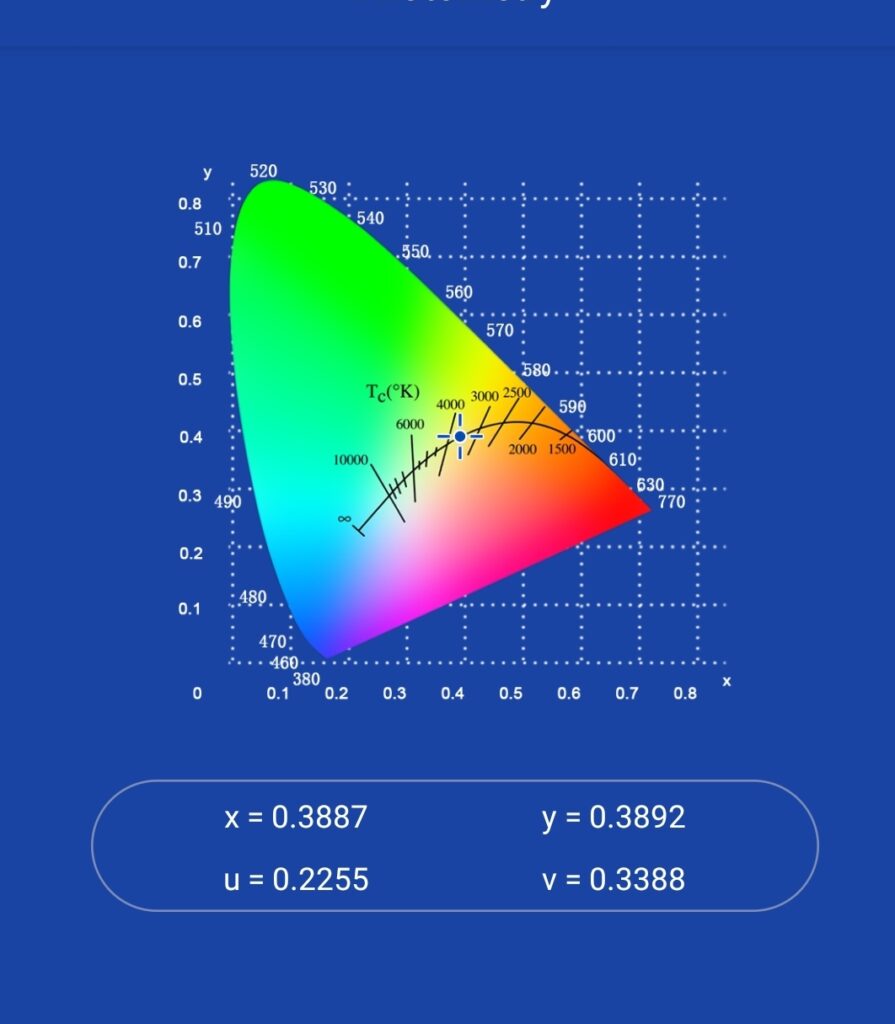

Dimensions and its competition
| Manker E14 IV | Millimeters | Inches |
|---|---|---|
| Length (18350 tube) | 82 mm | 3.2 in |
| Length (18650 tube) | 113 mm | 4.3 in |
| Head diameter | 28 mm | 1.1 in |
| Body diameter | 26 mm | 1 in |
Dimensions are rounded to the nearest millimeter, and to the nearest tenth of an Inch.
Weight:
| Manker E14 IV | Weight in grams | Weight in oz |
|---|---|---|
| Without battery: | 69 g | 2.5 oz |
| With Manker 18350 battery | 97 g | 3.5 oz |
| With Manker 18650 battery | 115 g | 4 oz |
Weight is rounded to the nearest gram, and to the nearest tenth of an Oz.
Flashlight size comparison with its competition (left to right):
Group 1: Manker MC13 II, Lumintop FWAA, Manker E14 IV, Brinyte HL16, Sofirn SP10 Pro
Group 2: Emisar D1, Manker E14 IV, Wurkkos TS25
Group 3 (front view): Wurkkos TS25, Lumintop FWAA, Manker E14 IV
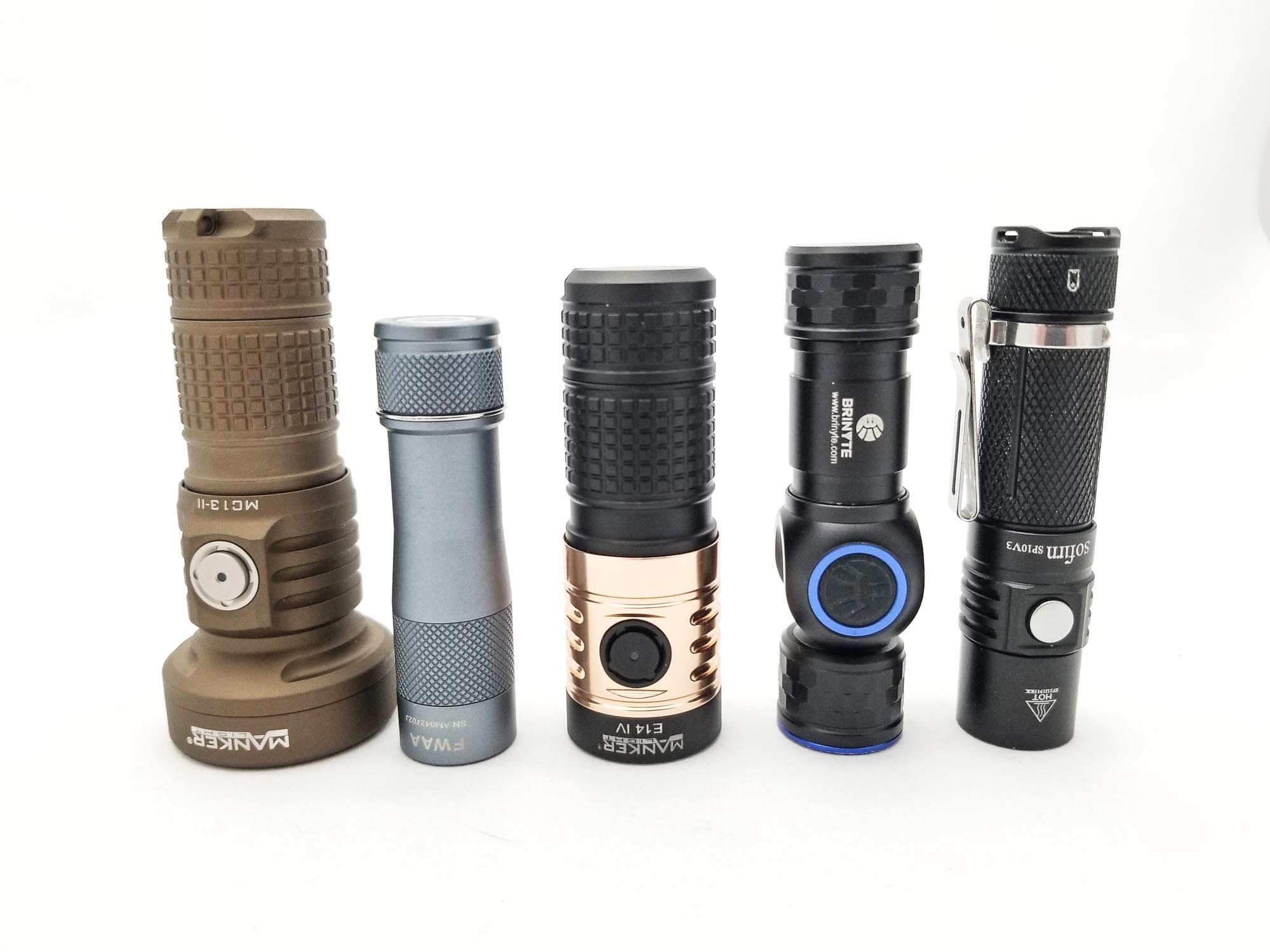
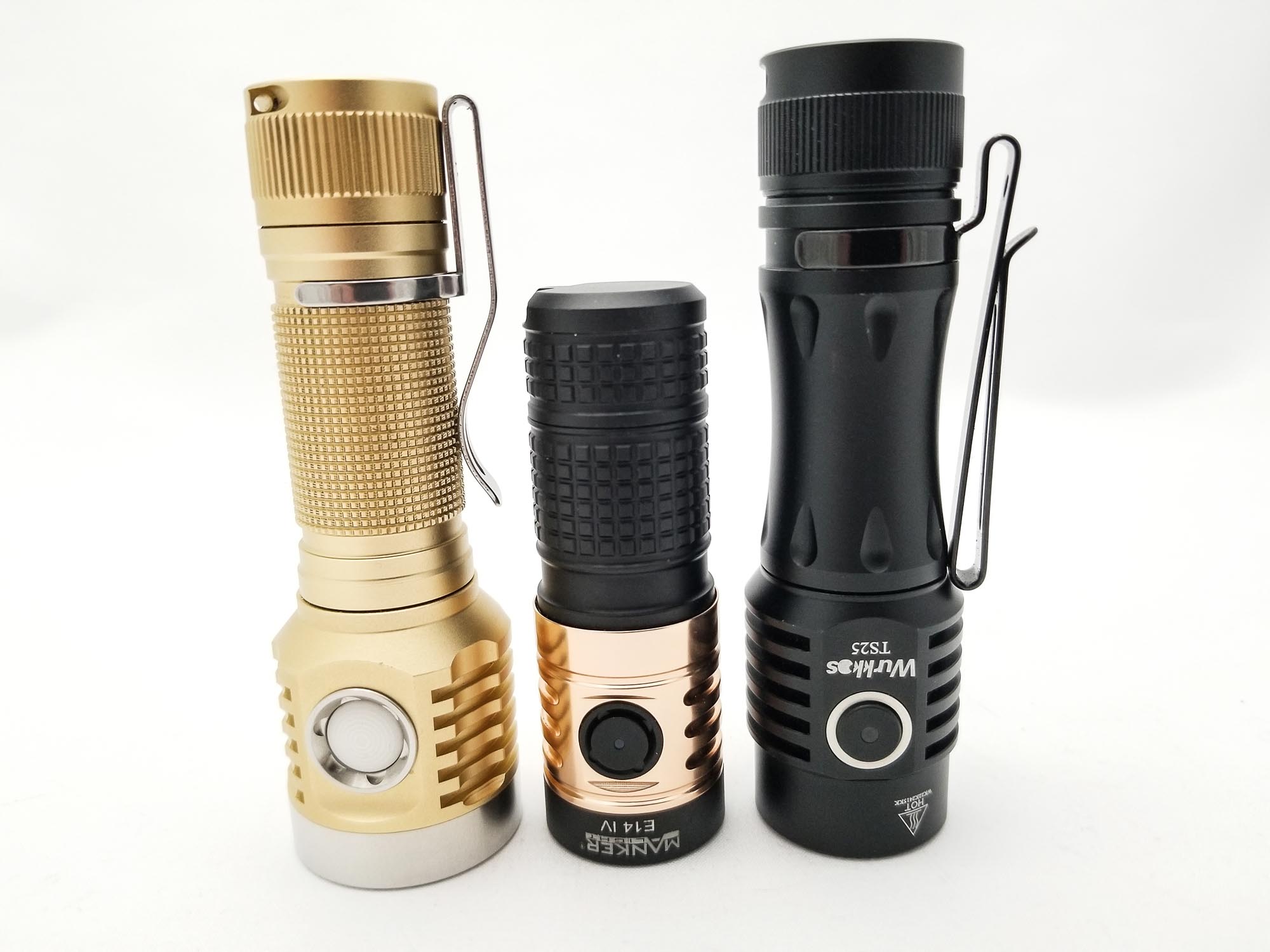
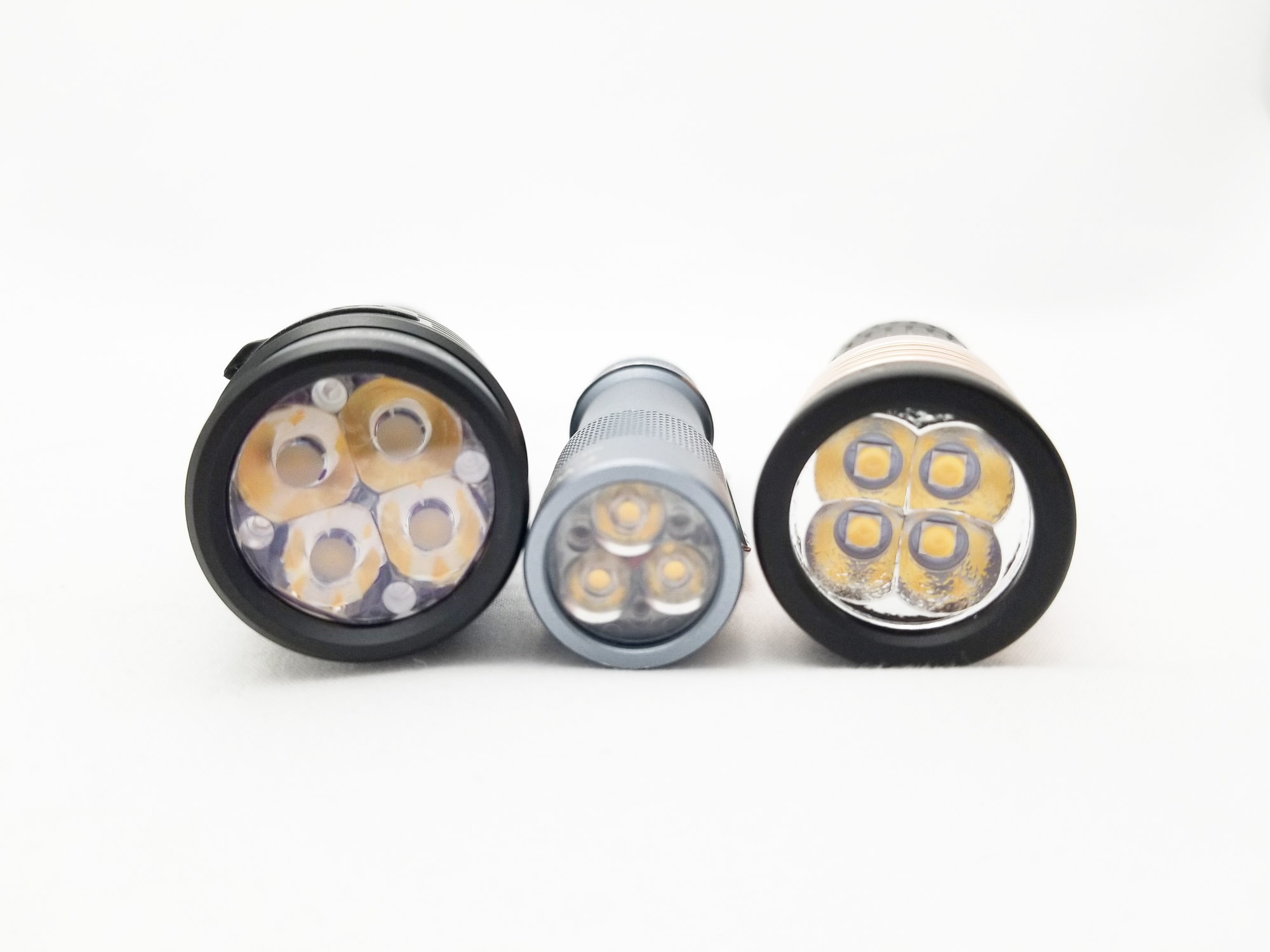
Manker E14 IV UI: User Interface and Driver
The First E14 was roughly based on the Astrolux S1/BLF A6 flashlight, and included the venerable (and beloved) A17DD-L FET+1 driver designed by BLF’s own Alex Wells. Manker only gives a small clue about the E14 IV driver, described as a non-PWM constant current digital circuit. That could mean anything, so we’ll see what the runtimes show. I’m thinking it’s a buck driver, but again, the runtimes keep flashlights honest.
For the UI, it’s a nice carryover from the other current-gen small Manker lights. It’s identical to the UI from the MC13 II, so I’m borrowing it from that review. The main mode set is called General Mode, a group for the Moonlight modes (Eco Mode) and one for the blinky modes (Special Mode). These are accessed by clicking and holding from off, or triple clicking from off or on for the blinkies.
Available modes:
- Eco Mode: Moonlight, Ultra Low 1, Ultra Low 2
- General Mode: Low, Medium, High, Turbo
Available blinky modes:
- Special Mode: Strobe, Beacon, SOS
From OFF:
- Single click switch: Turns on in last memorized mode
- Long press switch: Turns on in Moonlight. To cycle through Ultra Low 1 and Ultra Low 2 levels, press and hold
- Double click switch: Turbo
- Triple click switch: Strobe. To cycle through the blinky modes, press and hold
From ON:
- Press and hold switch: Switches modes L-M-H-L
- Single click switch: Turns off
- Double click switch: Turbo
- Triple click switch: Strobe
Mode memory:
- Last mode memory for General Mode group L-M-H. Turbo is not memorized.
Shortcuts:
- Click and hold from off activates the Eco Mode group. Press and hold for 1 sec. to switch between the modes in the group Moonlight, Ultra Low 1, Ultra Low 2.
- Double click for Turbo
- Triple click for the blinky (Special Mode) group. Press and hold 1 sec to switch between Strobe-Beacon-SOS
Low voltage warning:
- The LED indicator on the switch shows battery state. The LED is solid blue and stays lit for 10 seconds after turning on when the battery is >3.4 volts. The LED is purple after turn on for 10 seconds if the battery is 3.4 to 3.2 volts, the LED turns red and stays lit continuously for 3.2 to < 2.8 volts. Manker specifies LVP shut down at under 2.8 volts.
Strobe/blinkies
- Strobe, SOS, Beacon
Lock-out mode:
- Manual lockout by unscrewing the battery tube ⅛ turn, or electronic lockout activated by 4 clicks from off. The light will blink 4 times to acknowledge the lock, and the switch LED will glow when clicked if locked. Repeat to unlock.The light remembers the last mode that was selected when switched off and locked and starts in that mode when unlocked.
PWM
- None visible
Additional/summary info on the UI:
- This is a nice, simple and straightforward UI, and I really like it. While the multiple mode groups for the Moonlight mode and the special mode set for the blinky modes could be useful, I think it’s a bit unnecessary and adds complexity. It might be good for using the diffuser though, for when Moonlight is too low? Also, the Moonlight 2 looks really close to Low mode. I do think blinkies should be hidden though, so kudos to Manker for that. There should be ATR with Turbo mode, since this is a small host and will heat up quick, but yep…I’ll test that.
Manker E14 IV Charging and batteries
The Manker E14 has undergone some battery switcheroos over time (the version II was 18650 only), but it generally used a single 18350 size li-ion battery. Like the MC13 II series, the E14 IV can also accommodate an 18650 size battery thanks to the telescoping battery tube. I really liked this feature on the MC13s, and I’m glad it’s here.
The kit included a Manker-branded button 1100 mAh 18350 li-ion cell with onboard USB type C charging. As I said, the telescoping battery tube is genius-level stuff. It’s a really unique design, with the inner tube having threads on the bottom most part that threads into a short threaded section of the outer tube.
To switch to 18650 size batteries, remove the tube and unscrew the tailcap to loosen and open (extend) the inner tube. Insert the battery the normal way, negative end to the tail, positive to the driver, and screw in the battery tube. Easy peasy.
Battery compatibility is not going to be an issue. A VapCell M11 18350 fit fine, and it happily digested a bunch of 18650s including flat top, button top, and a protected button top 18650. There’s no onboard charging here, but you can plug the included battery into any USB wall wart (come on, we all have one lying around) using the included USB type C cable. Hooked up to a 18 W QC3 charger, the Ruideng AT35 USB tester shows about 2 amps at 4.9 volts, a bit high for a 1100 mAh battery, but it does drop a bit after a while. This should charge the battery in about an hour, and according to the tester, the cell took a bit over 1100 mAh. Switching to a lower output wall wart did bring the current output down a bit to a more reasonable 1.5 amps, so I recommend avoiding QC2 or QC3 chargers and just use a standard 1 or 1.5 amp charger.
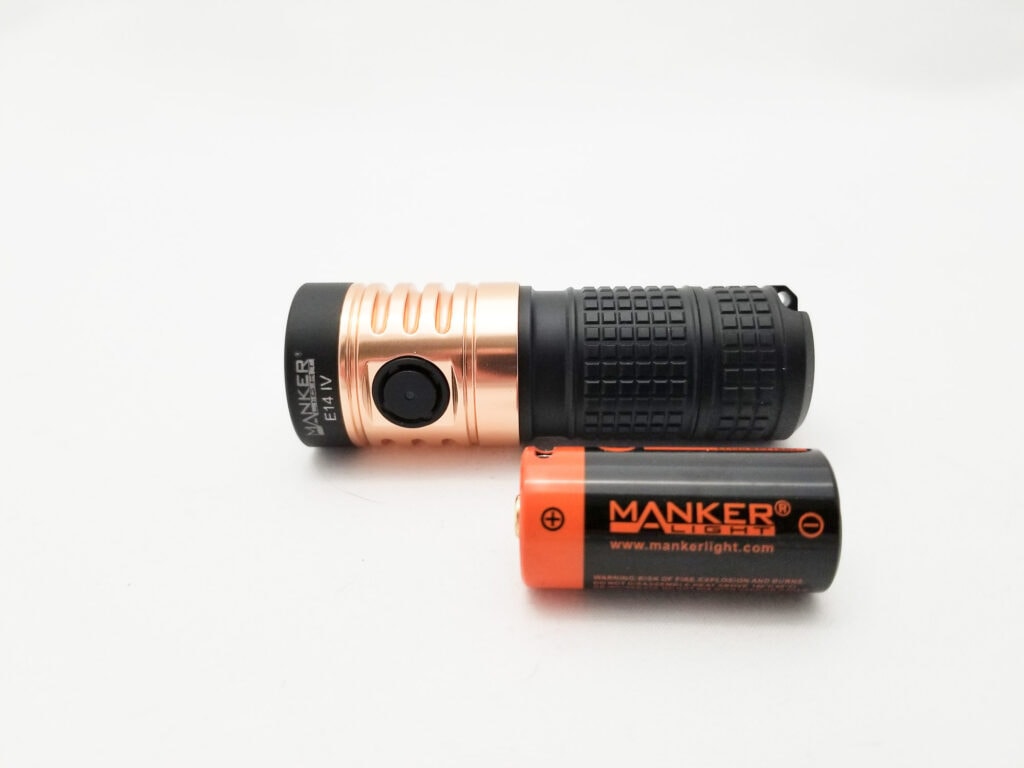


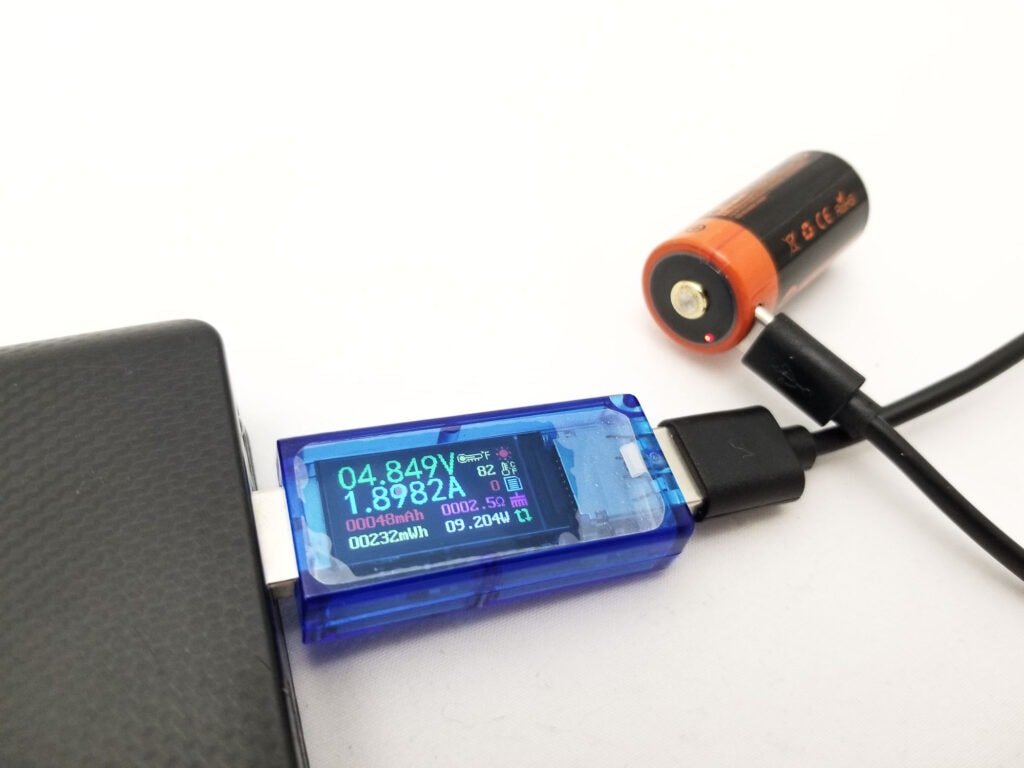
Performance test
Lumen measurements
How Lumens are Measured: Understanding ANSI FL1 Standards How Lumens are Measured: Understanding ANSI FL1 Standards: The ANSI FL1 standards specify that output in lumens should be measured 30 seconds after turning on, as this is the standardized time for measuring brightness according to the industry standard. This is why we focus on this part in our measurements. The ANSI FL1 standards require an ambient temperature of 22 ± 3°C. We record the ambient the ambient temperature to identify potential reasons for any observed discrepancies.Lumens are measured in my 30 cm integrating sphere with a Digi-Sense 20250-00 data logging luxmeter. The sphere has been calibrated with a Convoy S2+ measured to 260 Lumens and the figures are within 10% of actual. I used the included Manker branded 18350 and tested Medium, High, and Turbo modes. No amps this time due to the isolated current path. I also tested with a Manker branded 3100 mAh 18650. NOTE: 18650 cell specs are in parentheses.
| Mode | Specs | turn on | 30 sec | 10 minutes |
|---|---|---|---|---|
| Moonlight | 0.1 | 1.2 lm | 1.2 lm | – |
| Ultra Low 1 | 20 (25) | 110 lm | 110 lm | – |
| Ultra Low 2 | 55 (60) | 147 lm | 147 lm | – |
| Low | 90 (100) | 209 lm | 209 lm | – |
| Med | 460 (470) | 516 lm | 516 lm | 504 lm |
| High | 750 (800) | 824 lm | 811 lm | 787 lm |
| Turbo (18350) | 2100 | 1857 lm | 1820 lm | 86 lm |
| Turbo (18650) | 2800 | 3223 lm | 2866 lm | 578 lm |
Manker publishes specs with both the 18530 and 18650 batteries, and the outputs are different for each, with a spread of 5 to 700 Lumens. To keep it simple, I only tested outputs and runtimes on the 18350 cell and Turbo with both cells. I’m coming in high for L-H for the 18350 (surprisingly), and Turbo for the 18650 at turn on (impressive for warm tint high CRI LEDs!), and pretty close for the ANSI at 30 seconds. The High mode has decent sustained output as well.
Manker E14 IV Battery Life: Runtime graphs
How Runtimes are Measured: Understanding ANSI FL1 Standards About ANSI FL1 runtime standards: The runtime is measured until the light drops to 10% of its initial output (30 seconds after turning on). This does not mean that the flashlight is not usable anymore. The last column shows how long the light actually works till it shuts off. If there is a + symbol, it means that the test was stopped at that particular point, but the light was actually still running. This happens on certain occasions, with certain drivers, firmware, or batteries.Lumens are measured in my 50 cm integrating sphere with a Digi-Sense 20250-00 data logging luxmeter. The sphere has been calibrated with a Convoy S2+ measured to 260 Lumens and the figures are within 10% of actual. I used a Manker 3100 mAh 18650 and tested Turbo mode. I tested Turbo with the included Manker 1100 mAh 18350 for comparison to the 18650.
| Mode | Specified runtime | Measured runtime ANSI | Time till shut off |
|---|---|---|---|
| Medium | 1h 25m | 1h 3m | 1h 3m |
| High | 1h 8min | 45m 16s | 45m 16s |
| Turbo (18350) | 55m | 41m 45s | 41m 45s |
| Turbo (18650) | 2h 10min | 2h 8m | 2h 8m |
The runtimes are pretty bang on. It makes sense because Manker tests the runtimes with the same battery though. There’s regulation for Medium on the 18350 and Turbo on the 18650 cells, but High and Turbo on the smaller battery has obvious thermal regulation as the temperature rises and falls. The light wasn’t too hot to handle until about the 10 minute mark on Turbo(s) at around 55 C, and never got too hot on the other modes. There’s always a decent amount of light on each mode. LVP drops the output a bit before shutting down, and the light is usable after each runtime at low output (looks like Moonlight). The battery came out consistently at 2.9-3.0 volts after each test. This pretty great performance for a quad, compact EDC piece. I put together a comparison graph and while the FWAA has a decidedly smaller footprint, the E14 IV is a much better performer.
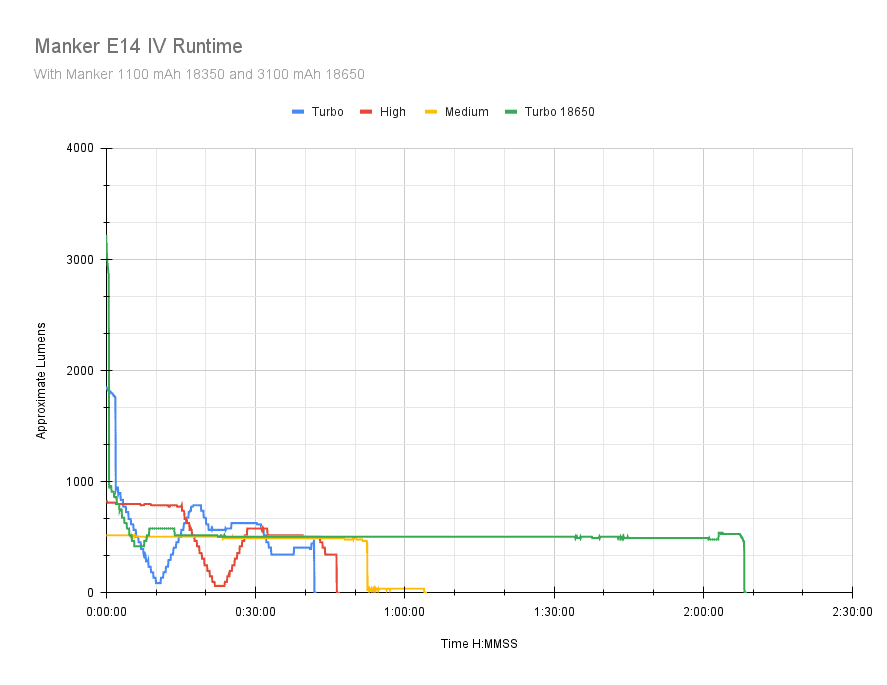
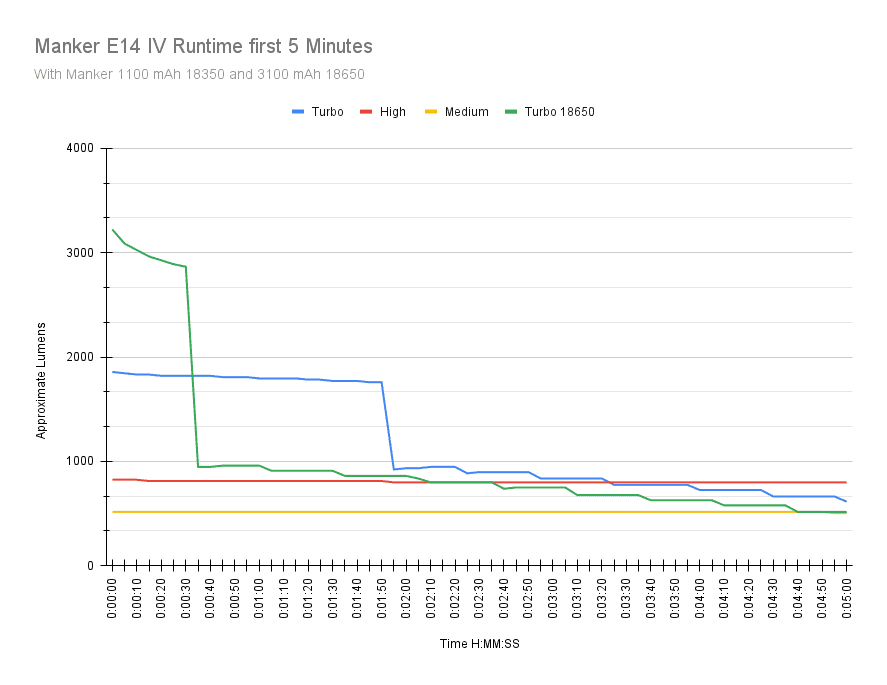
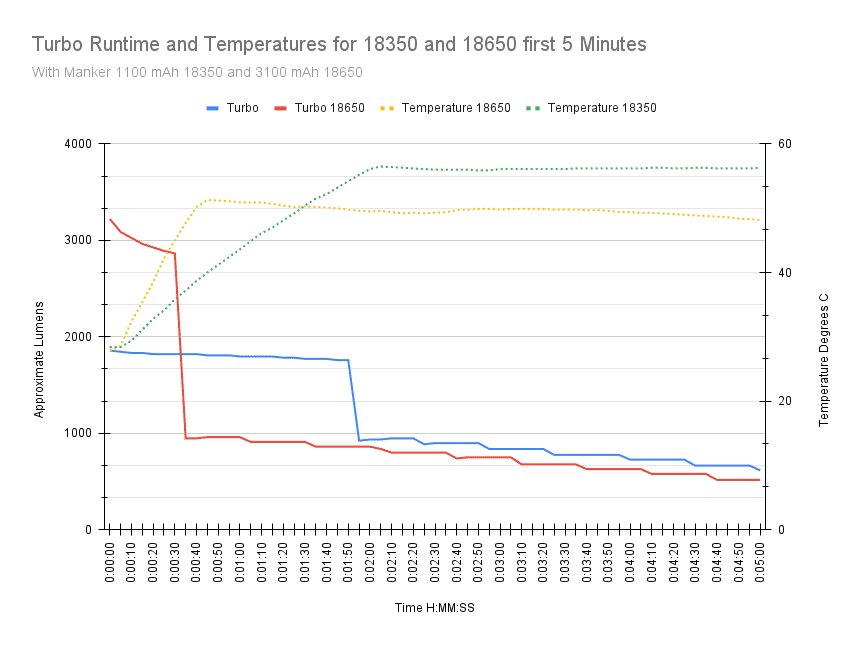
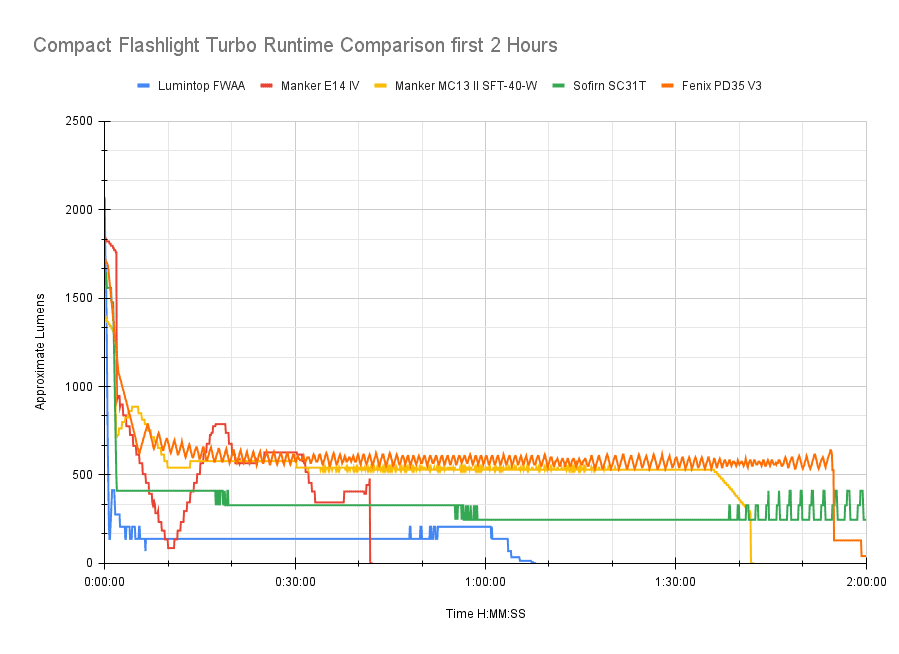
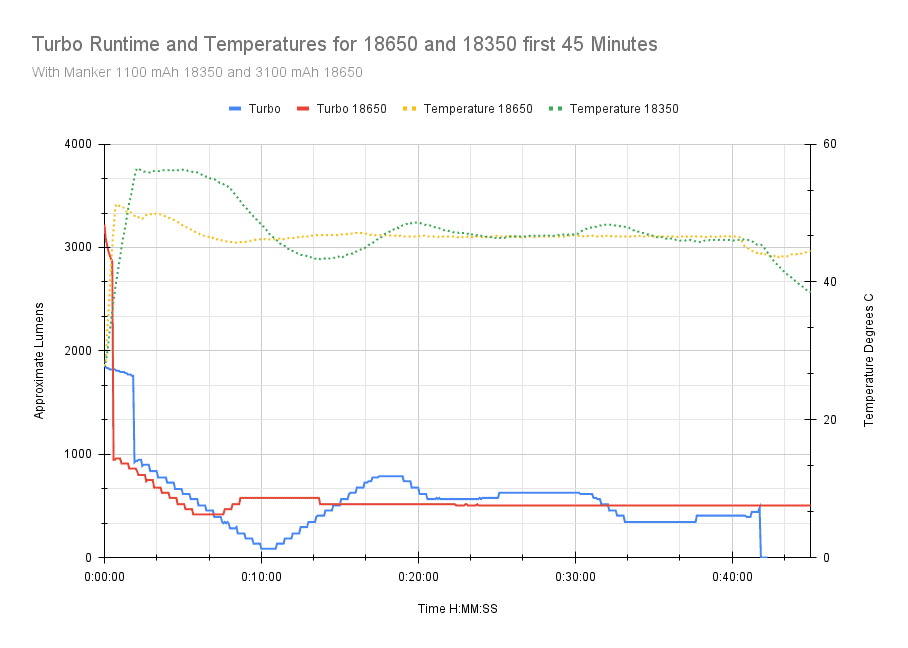
Peak beam intensity and beam distance measurements
About Peak beam intensity: Understanding ANSI FL1 Standards About peak beam intensity The calculated value of distance in meters at which the flashlight produces a light intensity of 0.25 lux. (0.25 lux is about the brightness of a full moon shining on an object). This means that the intensity has decreased so much, it becomes difficult to see darker objects, or objects that don’t reflect light. The columns ‘Meters’ and ‘Yards’ use rounded numbers.Beam distances are measured using a Uni-T UT383S luxmeter measured indoors at 5 meters using a fully charged Manker branded 3100 mAh 18650 and the included fully charged 1100 mAh 18350. Measurements taken at 30 seconds. I didn’t include the figures for the 18650 cell because they’re so similar, save for Turbo at start.
| Mode | Specs | Candela measured | Meters | Yards |
|---|---|---|---|---|
| Moonlight | ? | N/A | N/A | N/A |
| Ultra low 1 | ? | 75 | 17 | 19 |
| Ultra low 2 | ? | 125 | 22 | 24 |
| Low | ? | 200 | 28 | 31 |
| Medium | ? | 950 | 62 | 68 |
| High | ? | 1475 | 77 | 84 |
| Turbo* | 3969 | 3300 | 115 | 126 |
| Turbo 18350 at start | ? | 3575 | 120 | 131 |
| Turbo 18650 at start | ? | 6425 | 160 | 175 |
*Manker doesn’t specify whether the Turbo figure is with the 18650 or 18350. I think it’s the 18350 since my figure is pretty close. Moon was too low at 5 meters to show up. Throw figures are not listed for individual modes on the spec sheet, save for a single figure. Note that the ANSI figure difference between the 18350 and the 18650 cells was 25 cd, so not enough of a difference to make a difference. This is a floody light for sure, but the distance is adequate for most all EDC tasks. The beam would be further improved with Nichia 519A LEDs, but the Samsung LEDs do have the edge in efficiency for a little more output and runtime.
Beamshots
I compared the Manker E14 IV to some other flood EDC type flashlights, some with TIR, some with a reflector. Photos taken with my Samsung Note 8. The 95 meter shots have the camera set to 0.3s ISO 200 and 5000K WB.
Beamshots of the following flashlights compared:
- Manker E14 IV
- Wurkkos TS25 (quad TIR Nichia 519A)
- Mateminco LT40 (quad reflector XHP50.2)
- Wuben D1 (single LED TIR XP-L HI)
- Sofirn SC31T (reflector SST40)
- Manker MC13 II (SFT-40-W with 18650-TIR lens)
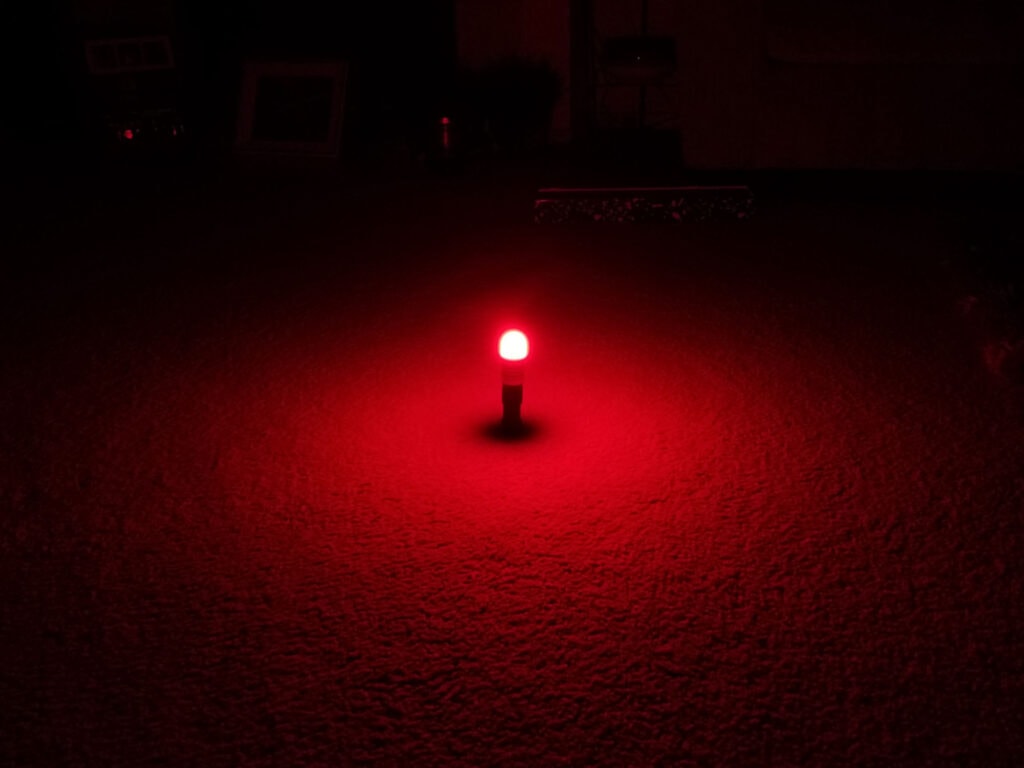
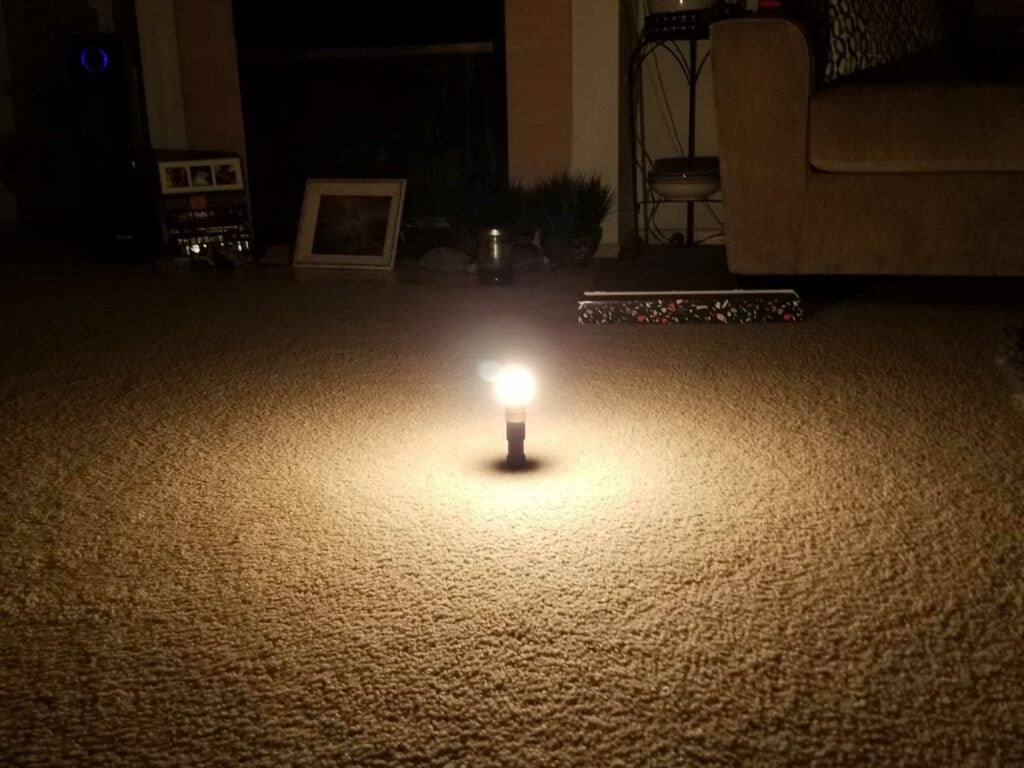
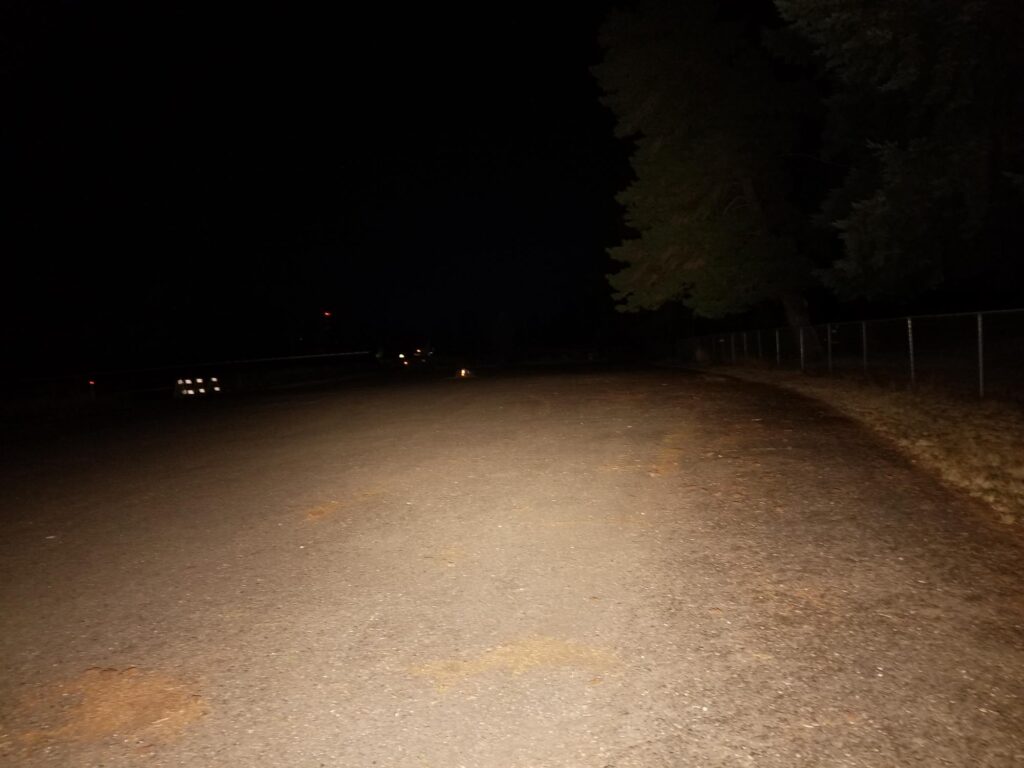
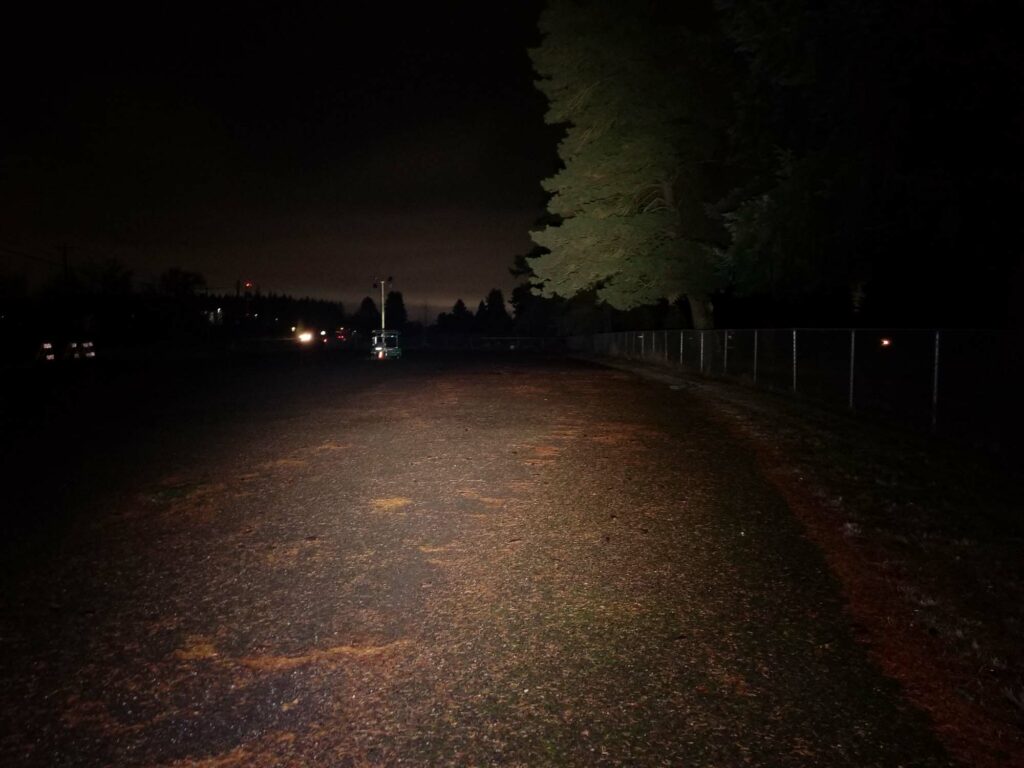
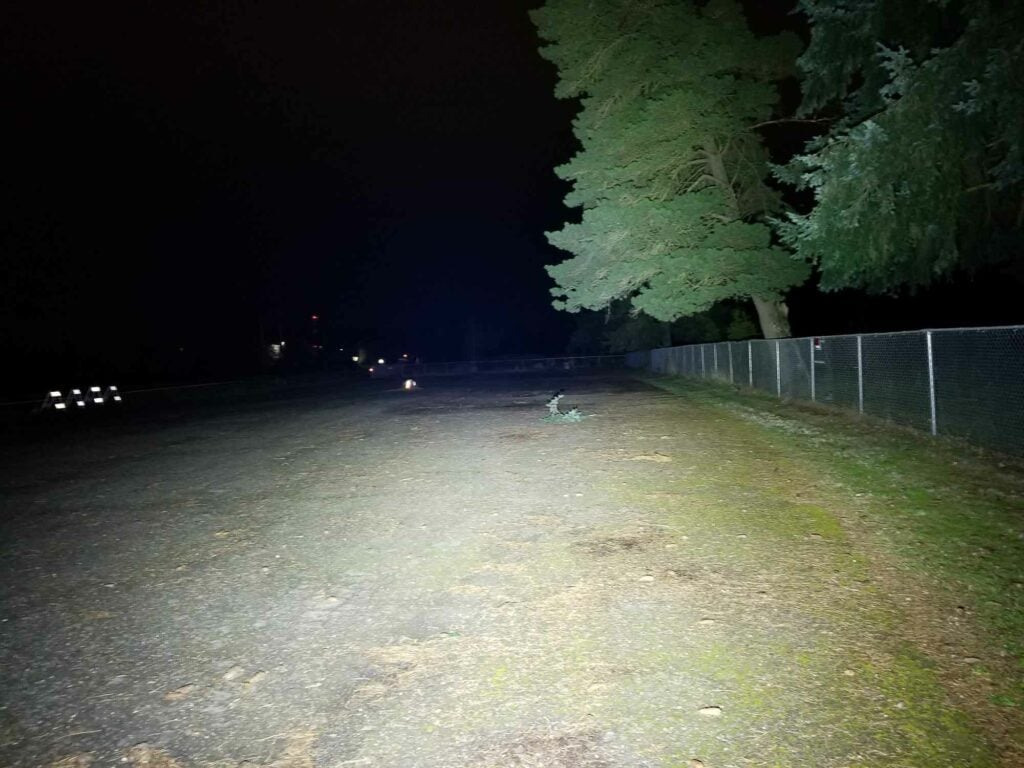
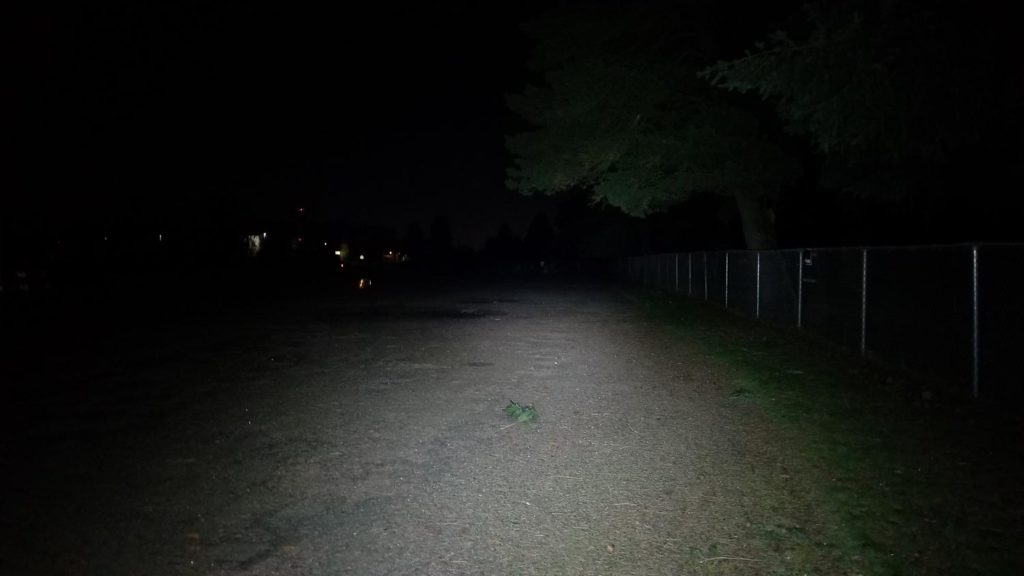
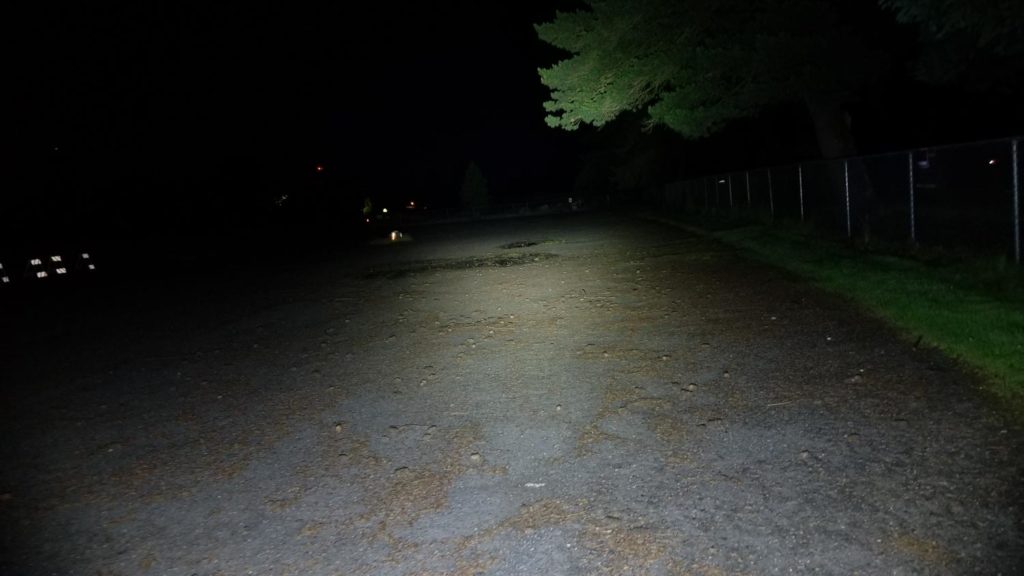
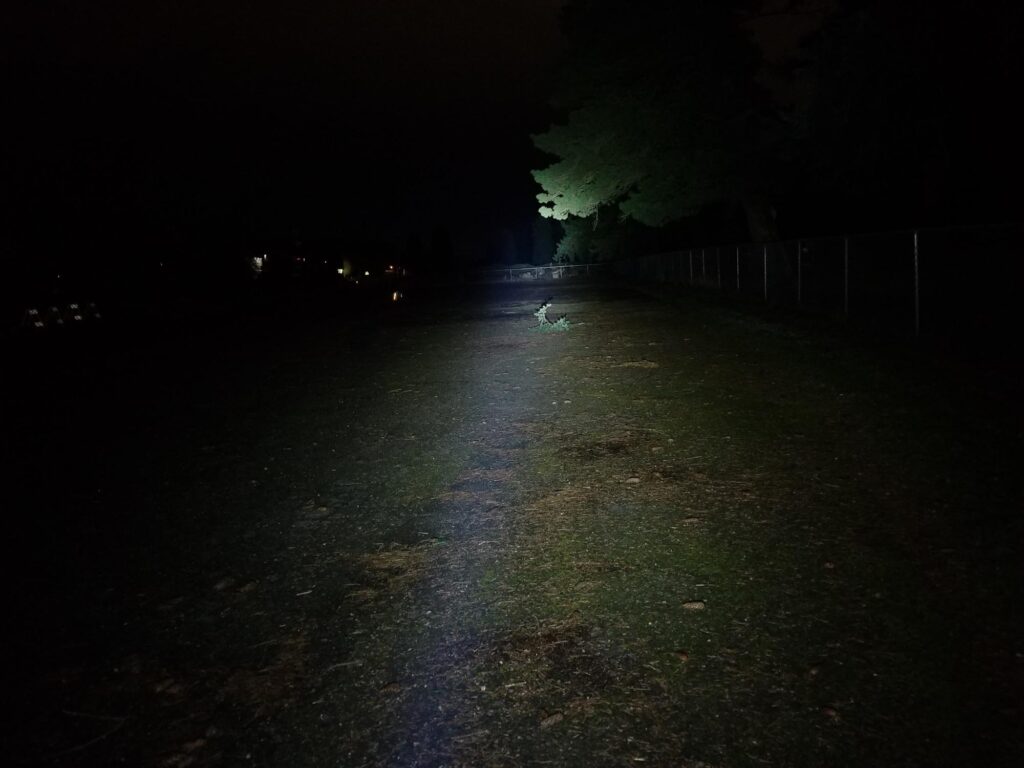
Disclaimer: This flashlight was sent to me for review at no cost by Flashlight GO. I have not been paid to review, nor have I been holding back on problems or defects.
Final Verdict
Pros
- Great build quality
- Small and lightweight
- Simple UI
- Regulated driver
- Can use 18650 and 18350 with one tube
- Nice EDC beam
- Magnetic tailcap
Cons
- Heats up quick
- No pocket clip
- No onboard charging
Explanation on star ratings:
1: Avoid: a match would be a better choice – 2: Poor: significant defect or issues; almost unusable – 3: Average: some defects or issues; but still usable 4: Good: recommended (minor issues) – 5: Great: highly recommended

4.5 stars: ★★★★⋆
While our star rating provides a reliable indicator, we encourage you to read the full review to make an informed decision based on your own needs and preferences.
Manker is on to something here, and that fits with my consensus of the brand (or at least the lights I’ve tested thus far). They’re not quirky, but different enough to stand out which is fine by me. This is important because the E14 IV is an EDC piece, and we all know how crowded that space is, with tons of really great offerings from Lumintop, Emisar/Noctigon, Wurkkos, Zebralight, Fenix, Olight, Sofirn, Convoy, Nitecore, Cyansky, Jetbeam, and on and on and on.
I’m not a huge EDC aficionado, but I know what makes a good EDC light, and this Manker fits the bill. It’s compact, but powerful, has a fully regulated driver, can be optioned with cool white or warm white high CRI LEDs, and can take a 18350 or 18650 cell without swapping tubes. The driver is tuned pretty bang-on also, and there’s little difference in output (runtime aside) with the 35 mm vs 65 mm battery. I’m a big fan of the copper head also. The UI, despite not being Anduril/Anduril 2, works perfectly fine here as well. I can forgive the quick Turbo step down, the lack of onboard charging, but not the lack of a pocket clip.
The MC13 II got away with that since it’s more of a pocket thrower, but this is a pure EDC piece, and that’s a bit inexcusable here since EDC=pocket carry and pocket carry is best facilitated by a pocket clip. Even without the clip, this is a great pocket light with good runtimes on an 18350 cel with regulated output and very decent output. A pocket clip would sweeten the deal, but even as-is, I really enjoy carrying the Manker E14 IV around and I think you should give it a look if you’re in the market for a compact pocket quad. 4.5 stars for the Manker E14 IV.
Buy your Manker E14 IV here
You can get 15% off this particular light with the following code: 1lumen15
Get 10% off all flashlights at FlashlightGo with our exclusive discount coupon: 1lumen
1lumen selects and reviews products personally. We may earn affiliate commissions through our links, which help support our testing.